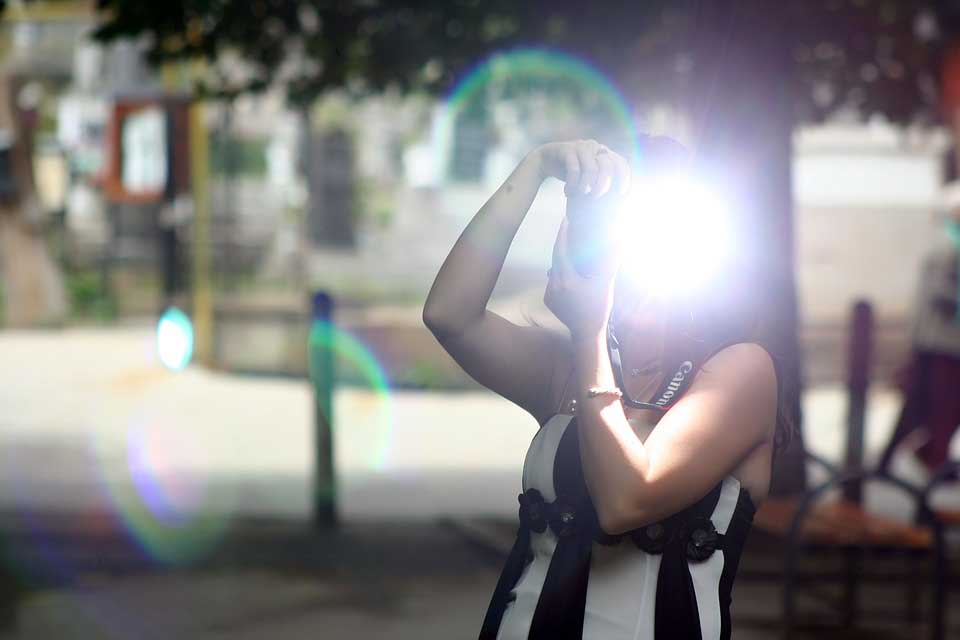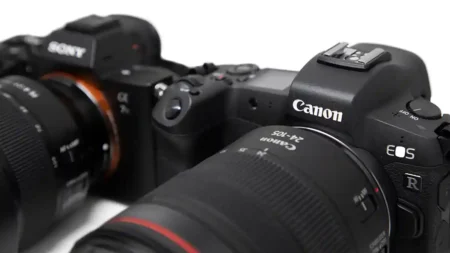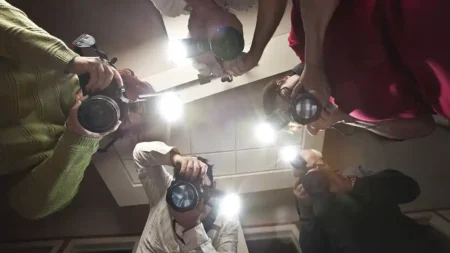Nothing gives a portrait more impact than shooting it outside, but at certain times of day or year a strong overhead sun can cause deep, dark shadows on your subject’s face, which doesn’t make for a very flattering image.
These shadows have a way of filling in the contours of one’s face, particularly around the eyes and nose, which can pose a real challenge for even the most skilled portrait photographer.
In these situations, using fill-flash is an effective and very convenient solution to the problem.
What is fill-in flash?
Fill-in flash is a quick burst of light from a flashgun in conditions when you might not normally use flash (e.g. anything not in low light).
Using fill-in flash in bright sunlight produces a quick burst of light that ‘fills in’ the dark shadow areas on someone’s face, for instance, when shooting an outdoor portrait.
But fill-in flash can be effective on dull and dreary days, too. A quick burst of light from your flashgun or pop-up flash can warm up colour rendition in your scene and greatly improve skin tones.
However, the key when using fill-in flash is to balance the flash with daylight so that your exposures look natural.
If you shoot with a DSLR or mirrorless camera combined with a flashgun, you have a very good chance at achieving natural-looking results, but there are a few things you can do to improve your odds…
When to use fill flash in photography
When the light is gloomy, for instance, make sure you set an ISO value that’s high enough to let you shoot at a shutter speed fast enough to avoid camera shake and freeze any slight motions that your subject may make. As a general rule, you’ll want to increase your camera’s sensitivity to enable a shutter speed of at least 1/60 sec.
Likewise, when the light is strong, dial in a lower ISO to avoid having to shoot at a very narrow aperture.
If you use fill flash with a shutter speed that is too slow, your subject will still be rendered sharp thanks to the burst of flash; however, what you’ll find is a halo effect – akin to a ghost-like blur – around your subject. This is caused by those slight movements.
In very bright conditions, you need to be careful not to exceed the maximum sync speed of your camera, which is typically 1/200sec. You’ll need to use the lowest ISO setting possible, as well as a narrow aperture.
Another option is to mount a neutral density (ND) filter on your lens to help cut down on the amount of light entering your lens.
What’s more, if using a flashgun you can also switch to High Speed Sync flash mode. Your HSS mode lets you work at faster shutter speeds, however the maximum available flash power will be reduced, meaning that unless you are positioned very close to your subject, your flashgun won’t be able to compete with the brightness of the sun.
[contentcards url=”https://camerajabber.com/off-camera-flash-explain-like-im-5/”]
What is balanced fill flash?
One of the biggest problems when using fill flash is balancing the the light from your flashgun with ambient light. If the two are off, images can look unnatural.
The crux of the problem in balancing flash with natural light is that your flash may be trying to illuminate the whole scene, instead of just adding some fill light to a subject in the foreground.
This often happens when your subject is off-centre in the frame, away from the area on which the flash metering system is concentrating on.
A quick and easy way to solve this problem is to zoom right into your scene and fill the central portion of your frame with your subject’s face. Next, press your flash exposure lock button, which will determine the required flash power for your shot and lock it in.
You can then zoom back out, re-compose and take your image. However, be warned that if you decided to move and take the shot from closer or farther away from your subject, you’ll need to repeat this process.
We recommend taking a couple of test shots, tweaking the exposure and flash power as required until you get an image that you’re happy with.
How to use fill-in flash
Use Aperture Priority mode
Using your camera’s Av mode allows you to access a wider range of shutter speeds to accommodate ambient lighting conditions when using flash. These will often run the gamut from ultra-long exposures up to your camera’s maximum sync speed, which is usually around 1/200sec.
Manually set ISO
Because your camera’s Auto ISO feature often locks your sensitivity to a value of around ISO 400 when using flash, it’s better to use set your sensitivity manually in order to give yourself more flexibility.
Use exposure compensation
Altering the camera’s exposure compensation enables you to brighten or darken the middle distance and background areas of a scene, which will usually be beyond the distance range of the flash. Apply positive exposure compensation to brighten up the background, or negative compensation to darken it.
Set flash compensation
Flash exposure compensation adjusts the strength of the flash output, so this will have more impact on how bright foreground areas are. You can adjust flash exposure compensation using the camera’s menu, but the setting will be overridden if you make adjustments using the flashgun’s onboard controls.



